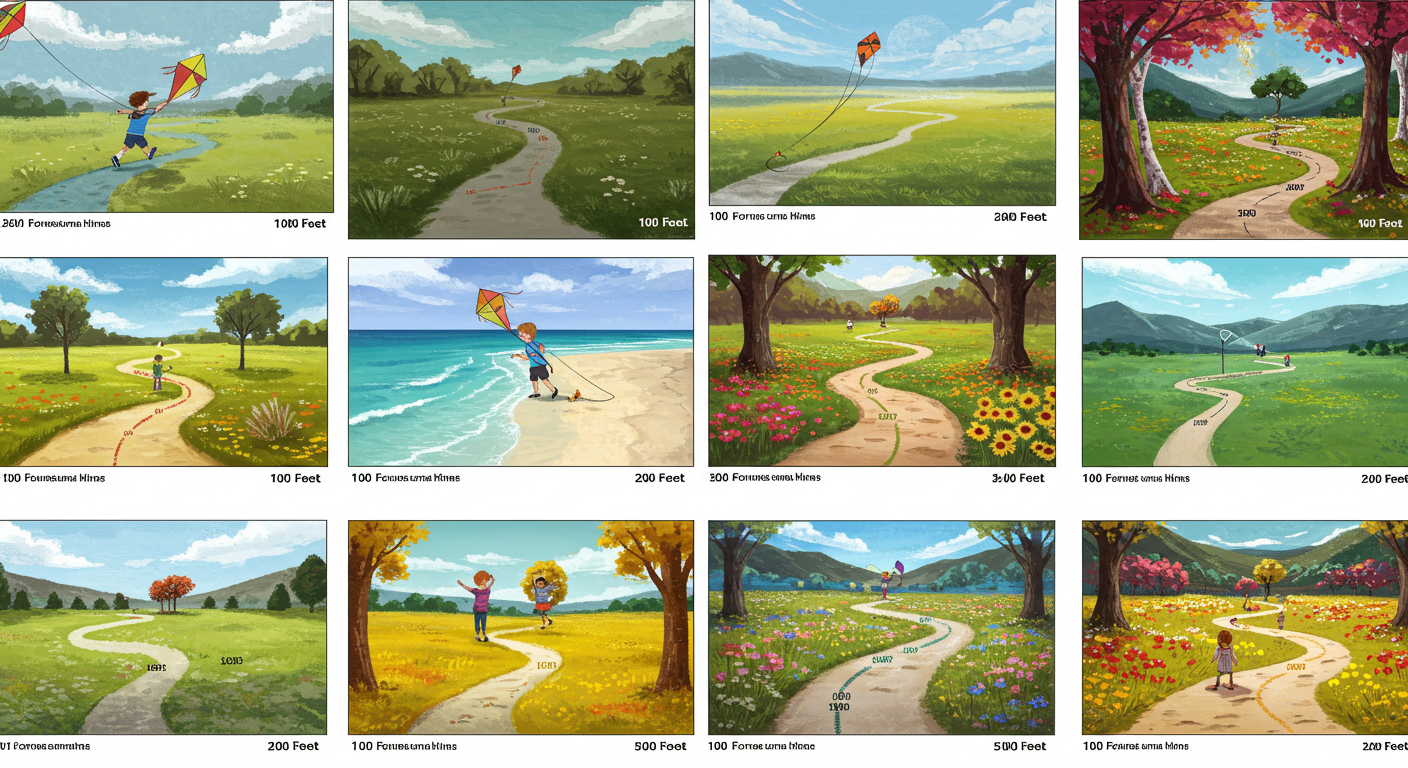Have you ever stood at the edge of something so vast you just couldn’t quite grasp its size? Maybe you’ve looked down a long stretch of road or stared up at a towering building, wondering just how big is 100 feet? It’s one of those numbers that feels abstract until you see it in real life.
Like, sure — 100 feet is a number, but how long is 100 feet really? What if I told you it’s roughly the length of a standard basketball court or about two school buses lined up bumper to bumper? That’s just the tip of the iceberg.
Whether you’re a curious soul or someone who loves to visualize measurements in everyday life, understanding the scale of 100 feet (or one hundred feet, as some like to say) helps anchor your sense of space. It’s the kind of number that’s at once precise yet mysterious — when converted, it’s 1,200 inches, 30.48 meters, or 0.03048 kilometers. So yeah, that’s a lot of numbers just to wrap your head around!
Let’s dive into 14 Things That Are 100 Feet (ft) Long, but not just in a boring “here’s a list” kind of way. I’ll sprinkle in stories, some cool cultural tidbits, and quirky facts so you really get a feel for what one hundred feet looks like in the wild, in cities, and even in sports arenas.
The Natural Giants: Animals and Trees Stretching 100 Feet
When we think of length or height, nature often blows us away with its grandiosity. It’s mind-boggling to imagine a living creature or a tree stretching to 100 feet. And yet, here they are.
- Blue Whale: The largest animal to ever live on Earth, the blue whale, can stretch to nearly 100 feet long, sometimes even longer. That’s about 30 meters of pure marine magnificence. To put that into perspective, imagine two school buses parked end to end—that’s the approximate size of a blue whale.
- Eastern White Pine (Pinus strobus): Among North America’s tallest trees, these pines often soar to around 100 feet. Walking in a forest of these giants feels like you’ve stepped into a natural cathedral, their towering trunks creating a canopy that whispers ancient secrets.
- Alligators: Not quite hitting 100 feet but interesting nonetheless, alligators range from about 10 feet minimum to 14 feet max. So, picture about 7 of these reptiles lined up and you’d be close to one hundred feet! In some cultures, spotting a huge alligator is both a thrilling and chilling experience.
Here’s a quick fun fact: In many Southern U.S. states, folks use the alligator’s length as a playful measurement — “He’s ‘bout as long as ten gators,” meaning roughly 100 feet. It’s quirky, but it helps people visualize big distances without pulling out a ruler.
Sports and Recreation: When 100 Feet Defines the Game
Sports give us tangible ways to understand distances and sizes, and 100 feet pops up more often than you’d think.
- Basketball Court: The official length of a basketball court is 94 feet, just shy of 100 feet. That’s close enough to help us visualize what 100 feet looks like in an indoor sports arena.
- Cricket Pitches: A cricket pitch measures about 22 yards, roughly 66 feet. So one hundred feet would be about one and a half cricket pitches laid end to end, stretching across the green like a dividing line.
- Olympic Swimming Pool: The length of an Olympic pool is 50 meters, or roughly 164 feet. So, 100 feet is about two-thirds of the pool’s length—enough to give a swimmer a serious workout in a single lap.
- American Football Field: One hundred feet is about a third of an American football field’s length, which is 300 feet excluding the end zones. It’s like standing right near the goal line and looking toward midfield.
These measurements aren’t just numbers; they shape the way athletes train and compete. For example, a sprinter in a 100-foot dash wouldn’t be sprinting an official race, but they’d still be racing across a significant fraction of a field or court.
Vehicles and Transportation: Where 100 Feet Rules the Road and Sky

When it comes to transportation, knowing the length of vehicles and containers is crucial for logistics and safety. Imagine trying to park a Boeing 737 or two semi-trailers without knowing their size — yikes!
- Boeing 737-500: This iconic jet aircraft measures around 100 feet in length. When you’re boarding one, you’re literally walking along something as long as a ten-story building is tall!
- Semi-Trailer Trucks: One semi-trailer is about 48 feet long. Two of these chained together make approximately 96 feet, just shy of 100 feet. These beasts dominate highways and are essential to freight logistics everywhere.
- School Buses: Line up three school buses end to end, each about 33 feet, and you get near 100 feet. That’s a moving convoy of laughter, chatter, and sometimes chaos on wheels.
- Shipping Containers: Standard containers come in two lengths—40 feet and 50 feet. Stack two containers lengthwise, and you get to 80-100 feet. These giants of the shipping world carry everything from clothes to cars across oceans and continents.
I once chatted with a truck driver who said, “When you’re hauling two trailers, you don’t just drive, you dance with the road.” The length changes everything — turns, parking, even stopping distances.
Urban Landscapes and Architecture: Building the 100 Feet Vision
Cities grow upward and outward, and 100 feet is often a key dimension that defines buildings and landmarks we see every day.
- 10-Story Building: Typically, a 10-story building stands about 100 feet tall. Imagine looking up at one of these and realizing the height is equal to the length of two semi-trailers parked bumper to bumper!
- Hollywood Sign Letters: Each letter of the famous Hollywood Sign on Mount Lee in the Santa Monica Mountains is about 49 feet tall. Two letters side by side would nearly equal 100 feet. That makes the sign not just iconic, but literally towering.
- Railroad Cars: Two typical railroad cars each stretch close to 50 feet, so placed end to end, they span about 100 feet. They remind us of the industrial era’s power and the scale of goods transported across continents.
Urban planners use these measurements daily — ensuring buildings fit zoning laws, that spaces feel neither cramped nor cavernous. The way 100 feet fits into a city’s skyline is a delicate balance of aesthetics and utility.
Visualizing Scale: Everyday Comparisons That Make 100 Feet Tangible
If you’re still wondering how much is 100 ft, sometimes everyday objects help more than precise numbers.
- Think of a giant swimming pool. The width of a standard pool is about 25 meters or 82 feet. So 100 feet would be just a bit wider than that, offering space for all kinds of splashing fun.
- If you’re picturing a football field, imagine one-third of that huge green expanse — that’s about 100 feet. Enough to host dozens of kids playing tag or a couple of dogs running wild.
- For the height-inclined, consider that a 10-story building is about 100 feet tall. If you look up to a building that high, you’re looking at a measurement usually reserved for length in our other examples.
- An average adult giraffe stands around 18 feet tall, so stack about five giraffes one on top of another, and you reach roughly 100 feet. A wild mental image but it’s surprisingly effective!
How to Make Measurements Personal: Creative Ways to Understand and Use 100 Feet

Knowing the scale of 100 feet can be surprisingly useful — whether you’re planning an event, designing a garden, or just trying to visualize spaces. Here are some tips on making these measurements your own:
- Use familiar objects: Like school buses, shipping containers, or even alligators to help friends or kids understand large distances without overwhelming them.
- Create mini visual aids: Lay down measuring tapes or ropes in your backyard to see what 100 feet looks like. You can even measure out lengths by walking heel-to-toe and counting your steps.
- Relate to sports fields: If you love sports, think about the courts and fields you know. How far can you throw a ball in 100 feet? Try it and see!
- Photography and social media: Take photos or videos with objects or people at different points along a 100-foot stretch, then share to show perspective — it’s a great conversation starter.
Frequently Asked Questions
how big is 100 feet
100 feet is about the length of a basketball court or two railroad cars placed end to end. It equals 30.48 meters or 1,200 inches.
how long is 100 feet
100 feet is roughly one-third the length of an American football field and approximately two-thirds the length of an Olympic swimming pool.
how much is 100 ft
100 feet equals 1,200 inches, 30.48 meters, or about 0.03048 kilometers.
what is 100 feet
100 feet is a unit of length commonly used in the US, equivalent to 12 dozen inches or just under one-third of a football field.
how tall is 100 feet
100 feet tall is approximately the height of a 10-story building or twice the height of a Hollywood Sign letter.
Conclusion
Understanding what is 100 feet in real terms helps us connect with our world in a more tangible way. It’s more than just a measurement in units — it’s a thread woven into the fabric of nature, culture, technology, and everyday life. From the majestic blue whale to the soaring pine, the hum of a Boeing 737, or the glowing letters of Hollywood’s iconic sign, one hundred feet resonates everywhere.
Next time you wonder “how long is 100 feet?” try to picture two school buses, or one third of a football field, or even just the height of a ten-story building standing upright before you. Measurements aren’t just numbers; they’re stories of scale, context, and human experience.

Rober max seo expert



